- 路 Microwave
- 路 Atmospheric Pressure Microwave 路 Pressure Microwave 路 Parallel Microwave
- 路 Ultrasonic 路Low Temperature Ultrasound
- 路 Ultraviolet Light
- 路 Microwave Heating 路 Atmospheric Pressure Synthesis 路 Atmospheric Pressure Catalysis 路 Atmospheric Pressure Extraction
- 路 Sample Preparation 路 Microwave Digestion
- 路 Soil Digestion 路 High Pressure Synthesis
- 路 Solid Phase Synthesis
- 路 Organic Synthesis
- 路 Ionic Liquid Synthesis
- 路 Degradation Of Natural Organic Matter
- 路 Natural Product Extraction / Purification
河北祥鹄科学仪器有限公司
241 Facile microwave synthesis of a Z-scheme imprinted ZnFe2O4/Ag/PEDOT with the specific recognition ability towards improving photocatalytic activity and selectivity for tetracycline
This paper, written by researchers from Jiangsu University and others, discusses Facile microwave synthesis of a Z-scheme imprinted ZnFe2O4/Ag/PEDOT with the specific recognition ability towards improving photocatalytic activity and selectivity for tetracycline. The paper is published in an important journal < Chemical Engineering Journal >. IF:6.735.
In recent years, the research work of microwave chemical instrument used in the synthesis of materials has become a hot direction of scientific research, which has been paid great attention to by many scholars!
The Z-scheme imprinted ZnFe2O4/Ag/PEDOT was synthesized by the microwave polymerization method and surface imprinting technique, which possessed good partial hollow spherical structure, good light response ability, good magnetic separation performance, good photocatalytic stability and reproducibility. More importantly, due to the introduction of Ag/PEDOT into the surface imprinted layer, Z-scheme structure was formed to enhance the photocatalytic activity based on Ag acted as the mediator, meanwhile, owing to the existence of the imprinted cavity in the surface imprinted layer, the selectivity had been significantly improved, in a word, the as-prepared Z-scheme imprinted ZnFe2O4/Ag/PEDOT achieved the goal for simultaneously improving the photocatalytic activity and selectivity. Z-scheme imprinted ZnFe2O4/Ag/PEDOT possessed the highest photodegradation rate (71.77 %) for degradation of tetracycline under the simulated sunlight irradiation of 120 min, which was approximately 4.74 times to that of ZnFe2O4, 1.42 times to that of Ag/PEDOT and 1.31 times to that of non-imprinted ZnFe2O4/Ag/PEDOT, respectively. And the coefficient of selectivity of Z-scheme imprinted ZnFe2O4/Ag/PEDOT relative to ZnFe2O4, Ag/PEDOT, non-imprinted ZnFe2O4/Ag/PEDOT was 1.84, 1.82, 1.79 in the single antibiotic solution and 1.78, 1.75, 1.67 in the binary antibiotic solution, respectively. This work provided a new synthesis strategy for the imprinted photocatalysts and also provided a new idea for the treatment of specific pollutants in the water environment.
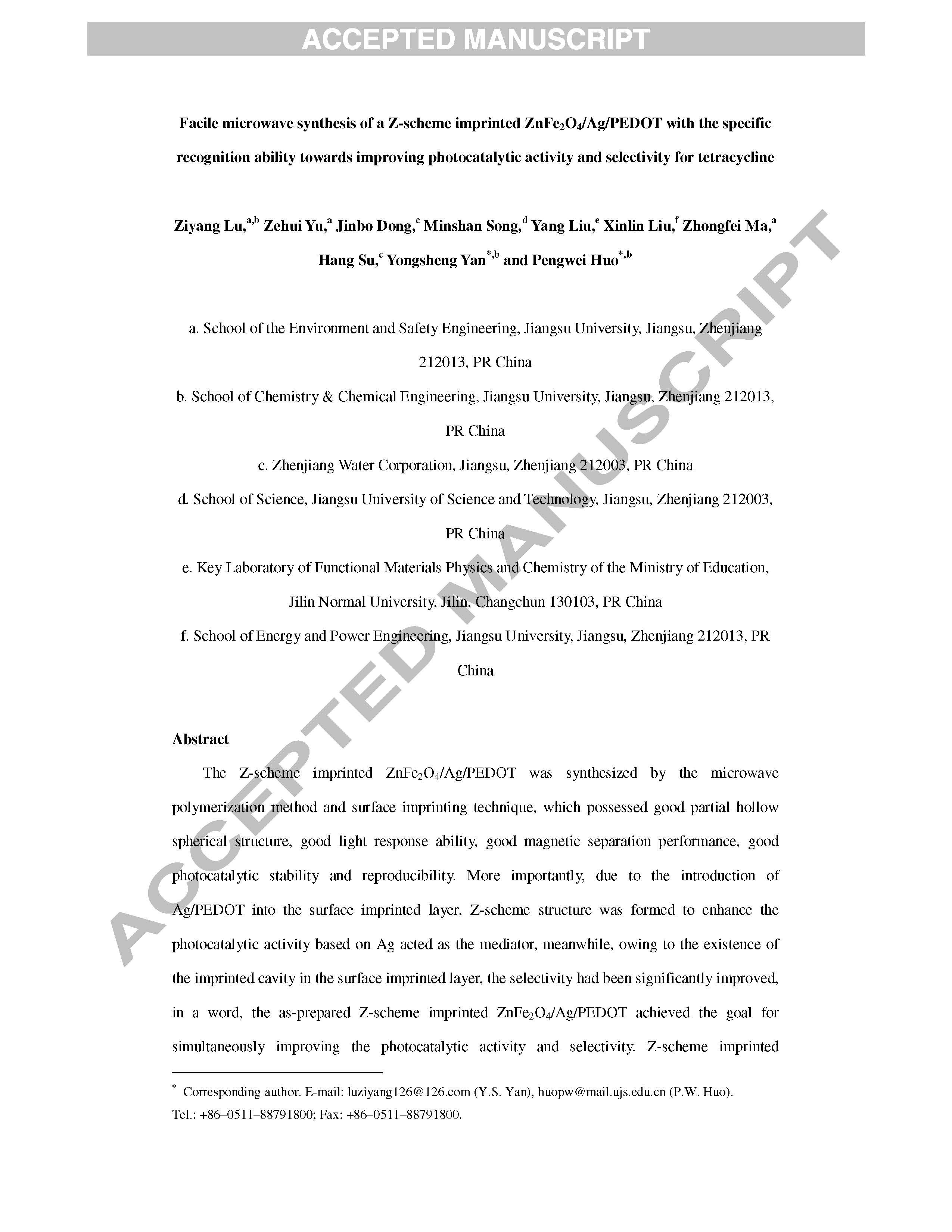
Fig.1/4↑

Fig.2/4↑
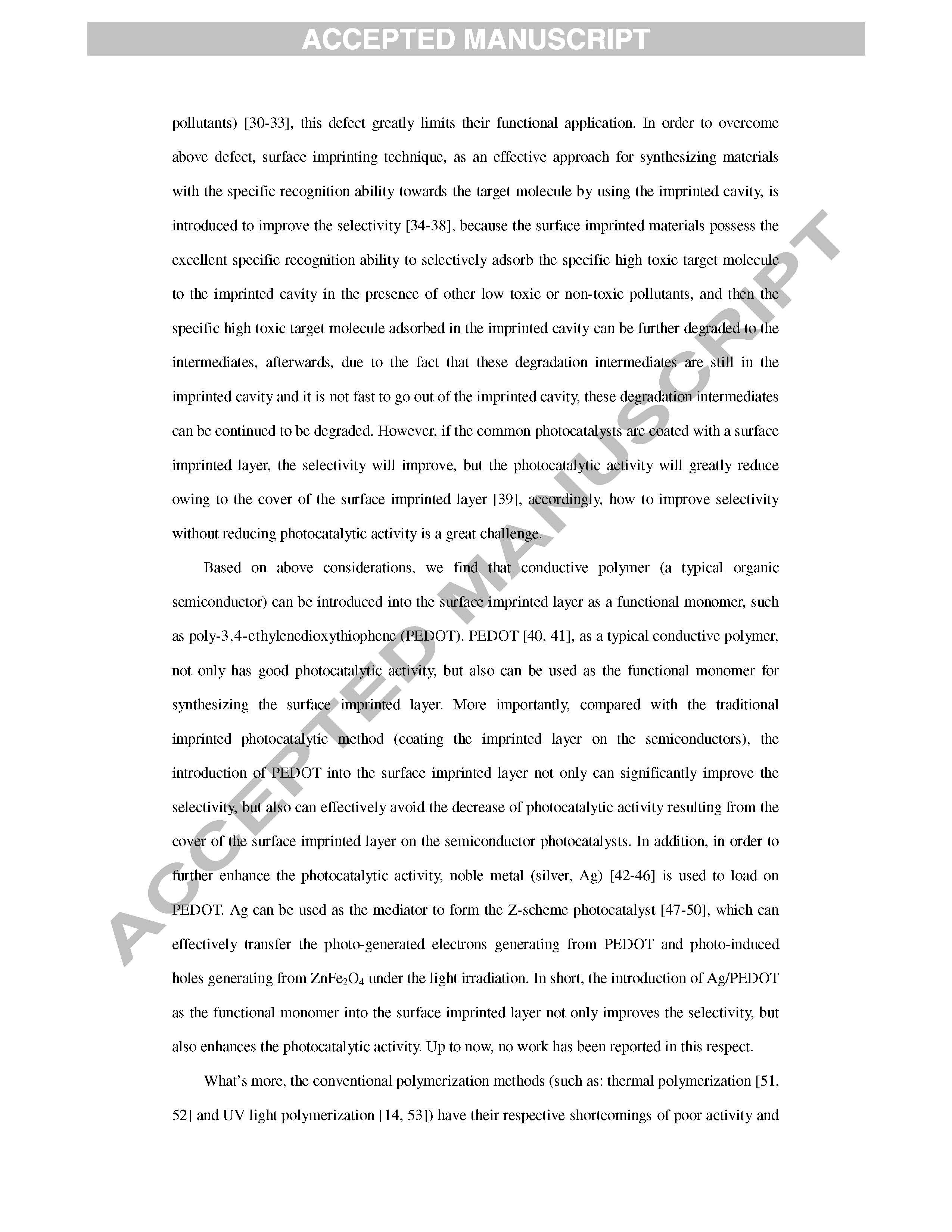
Fig.3/4↑
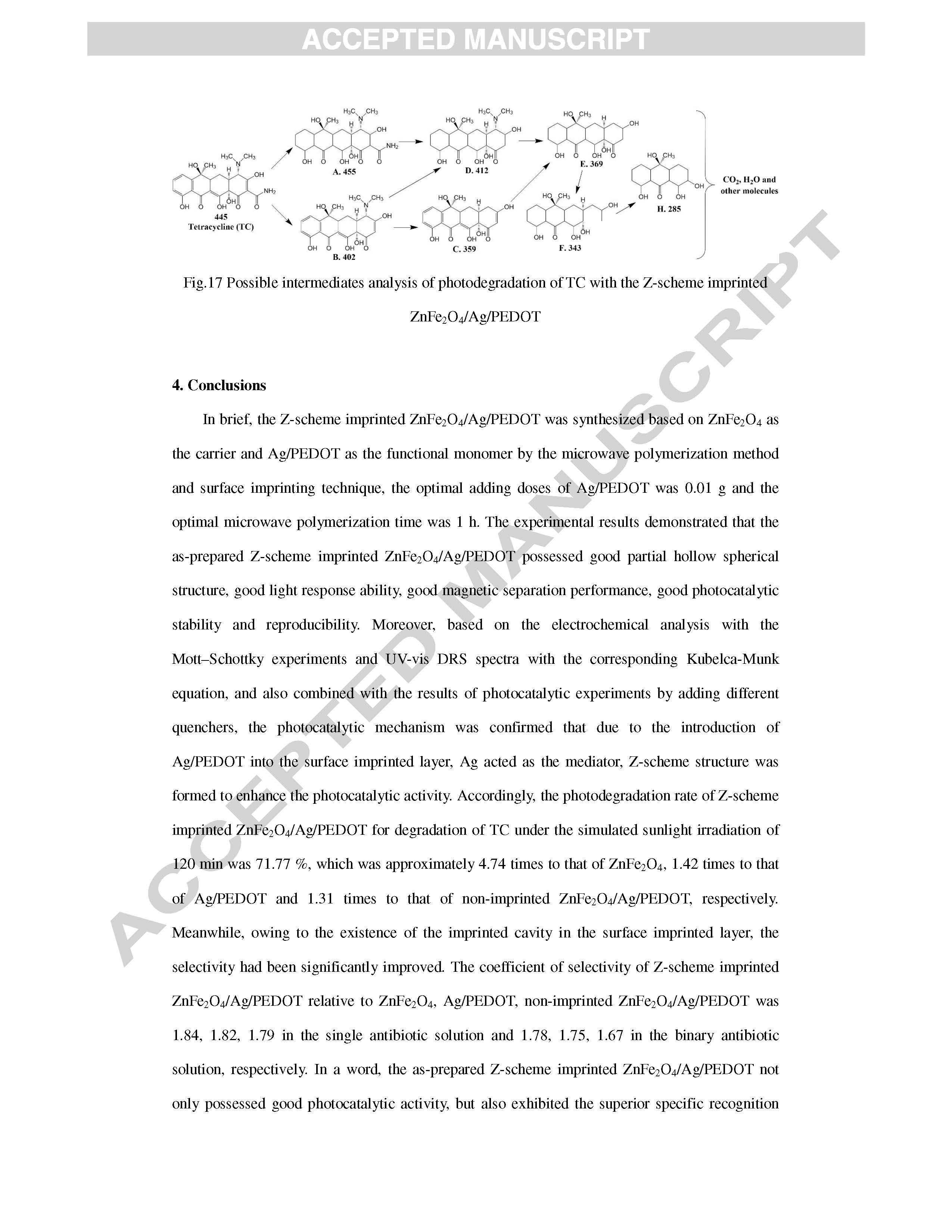
Fig.4/4↑
In brief, the Z-scheme imprinted ZnFe2O4/Ag/PEDOT was synthesized based on ZnFe2O4 as the carrier and Ag/PEDOT as the functional monomer by the microwave polymerization method and surface imprinting technique, the optimal adding doses of Ag/PEDOT was 0.01 g and the optimal microwave polymerization time was 1 h. The experimental results demonstrated that the as-prepared Z-scheme imprinted ZnFe2O4/Ag/PEDOT possessed good partial hollow spherical structure, good light response ability, good magnetic separation performance, good photocatalytic stability and reproducibility. Moreover, based on the electrochemical analysis with the Mott–Schottky experiments and UV-vis DRS spectra with the corresponding Kubelca-Munk equation, and also combined with the results of photocatalytic experiments by adding different quenchers, the photocatalytic mechanism was confirmed that due to the introduction of Ag/PEDOT into the surface imprinted layer, Ag acted as the mediator, Z-scheme structure was formed to enhance the photocatalytic activity. Accordingly, the photodegradation rate of Z-scheme imprinted ZnFe2O4/Ag/PEDOT for degradation of TC under the simulated sunlight irradiation of 120 min was 71.77 %, which was approximately 4.74 times to that of ZnFe2O4, 1.42 times to that of Ag/PEDOT and 1.31 times to that of non-imprinted ZnFe2O4/Ag/PEDOT, respectively. Meanwhile, owing to the existence of the imprinted cavity in the surface imprinted layer, the selectivity had been significantly improved. The coefficient of selectivity of Z-scheme imprinted ZnFe2O4/Ag/PEDOT relative to ZnFe2O4, Ag/PEDOT, non-imprinted ZnFe2O4/Ag/PEDOT was 1.84, 1.82, 1.79 in the single antibiotic solution and 1.78, 1.75, 1.67 in the binary antibiotic solution, respectively. In a word, the as-prepared Z-scheme imprinted ZnFe2O4/Ag/PEDOT not only possessed good photocatalytic activity, but also exhibited the superior specific recognition ability for selective photodegradation of TC. This work provided a new synthesis strategy for the imprinted photocatalysts and also provided a new idea for the treatment of specific pollutants in the water environment.
Z-scheme imprinted ZnFe2O4/Ag/PEDOT was synthesized via the microwave polymerization method and surface imprinting technique, the specific process was as follows: 0.01 g of Ag/PEDOT and 0.1 g of ZnFe2O4 were added into 20 mL of DMSO with the magnetic stirring for 30 min at 90 oC, after adding 0.05 mmol of TC, the mixed solution was stored under a N2 atmosphere for 12 h without light. Afterwards, 0.5 mL of TRIM and 0.01 g of AIBN were both added into above mixed solution, the polymerization reaction was carried out in the microwave synthesizer (XH-300UL, Beijing XiangHu Science and Technology Development Lo., Ltd) at 700W and 60 oC. After reacting 1 h, the product was washed with anhydrous ethanol and deionized water for several times. Subsequently, the molecular template (TC) was removed by adding 200 mL deionized water into above solution under the simulated sunlight irradiation (250 W xenon lamp) for 2 h with the magnetic agitation at the room temperature under an air atmosphere. Finally, the solid product was washed with anhydrous ethanol and deionized water for several times, after drying under vacuum at 40 oC, Z-scheme imprinted ZnFe2O4/Ag/PEDOT was obtained. The whole scheme of the synthesis approach was showed in Scheme. 1.








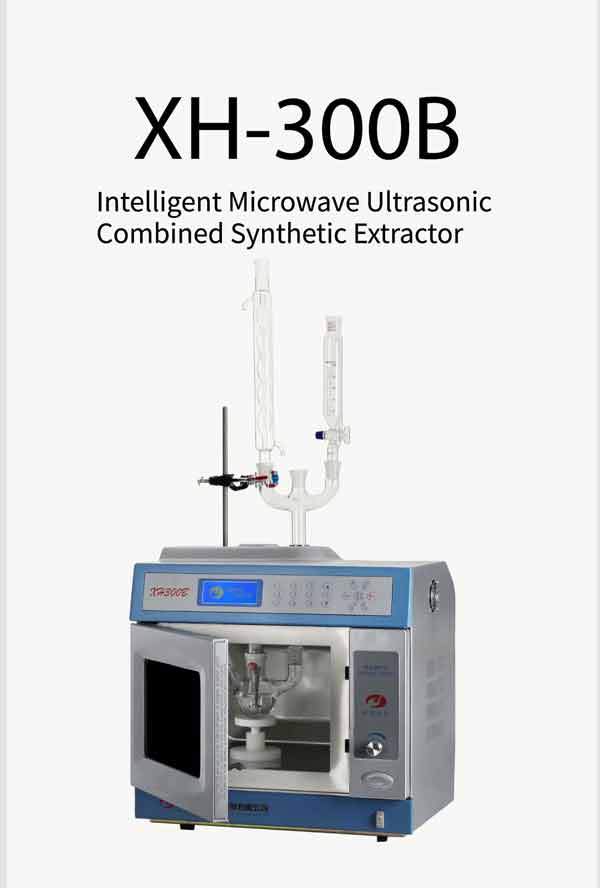

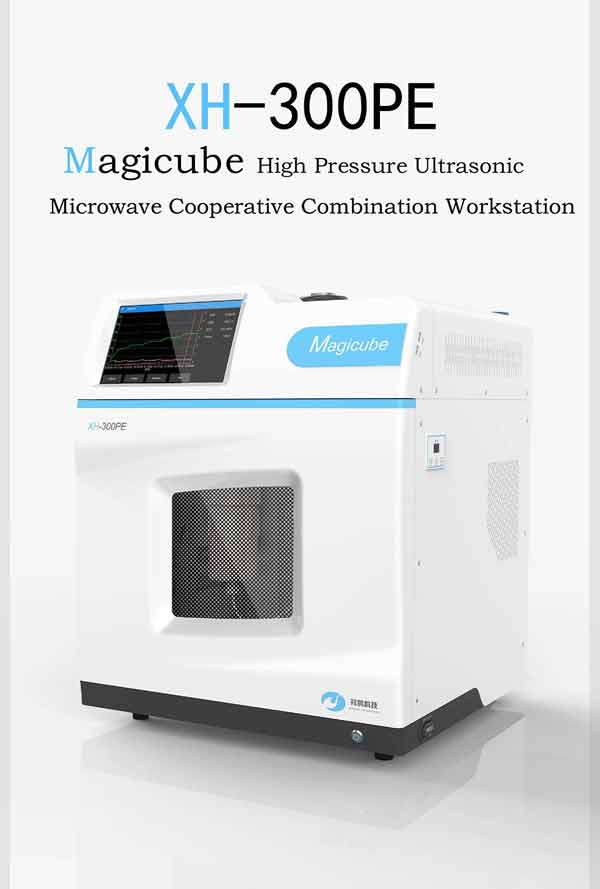
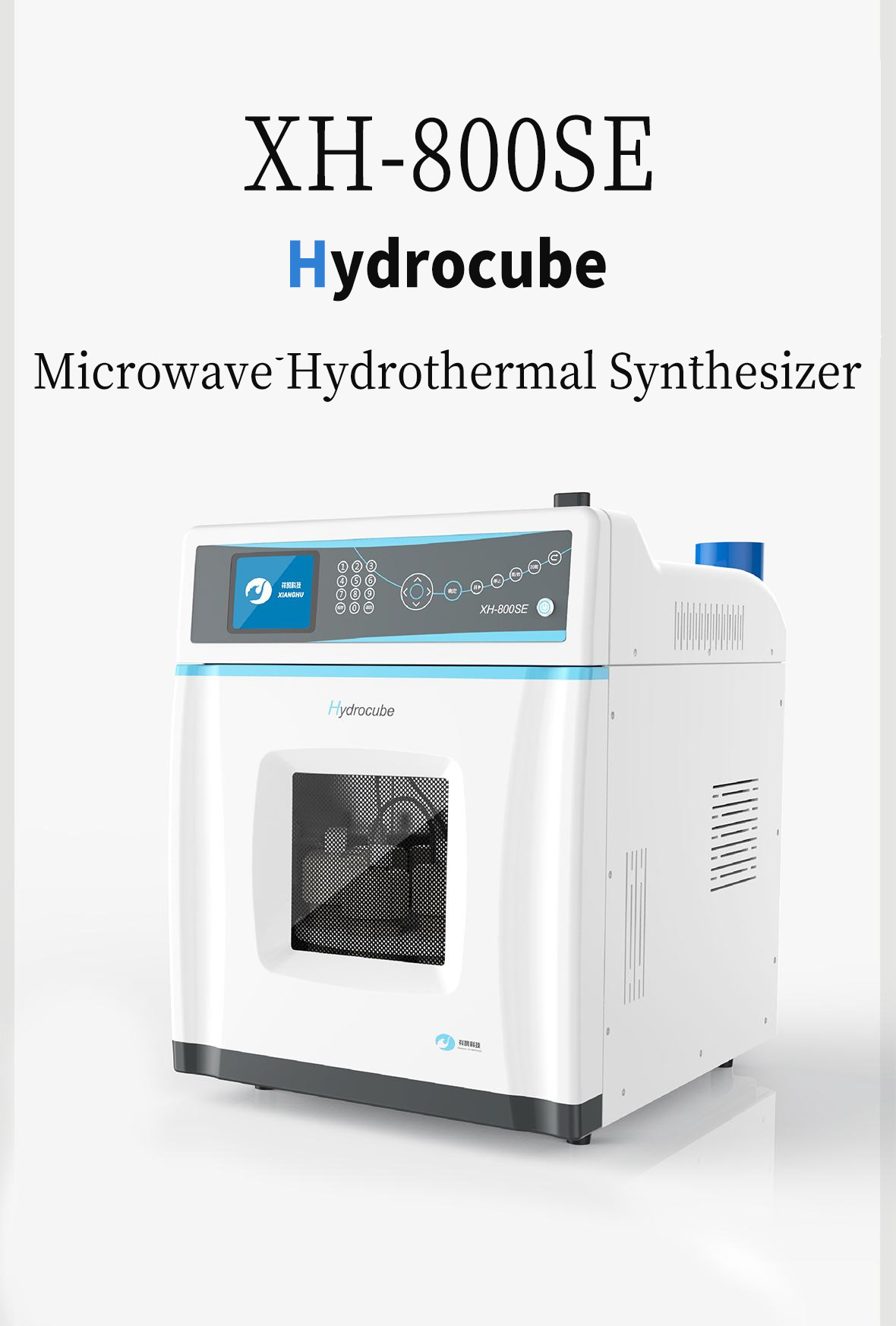
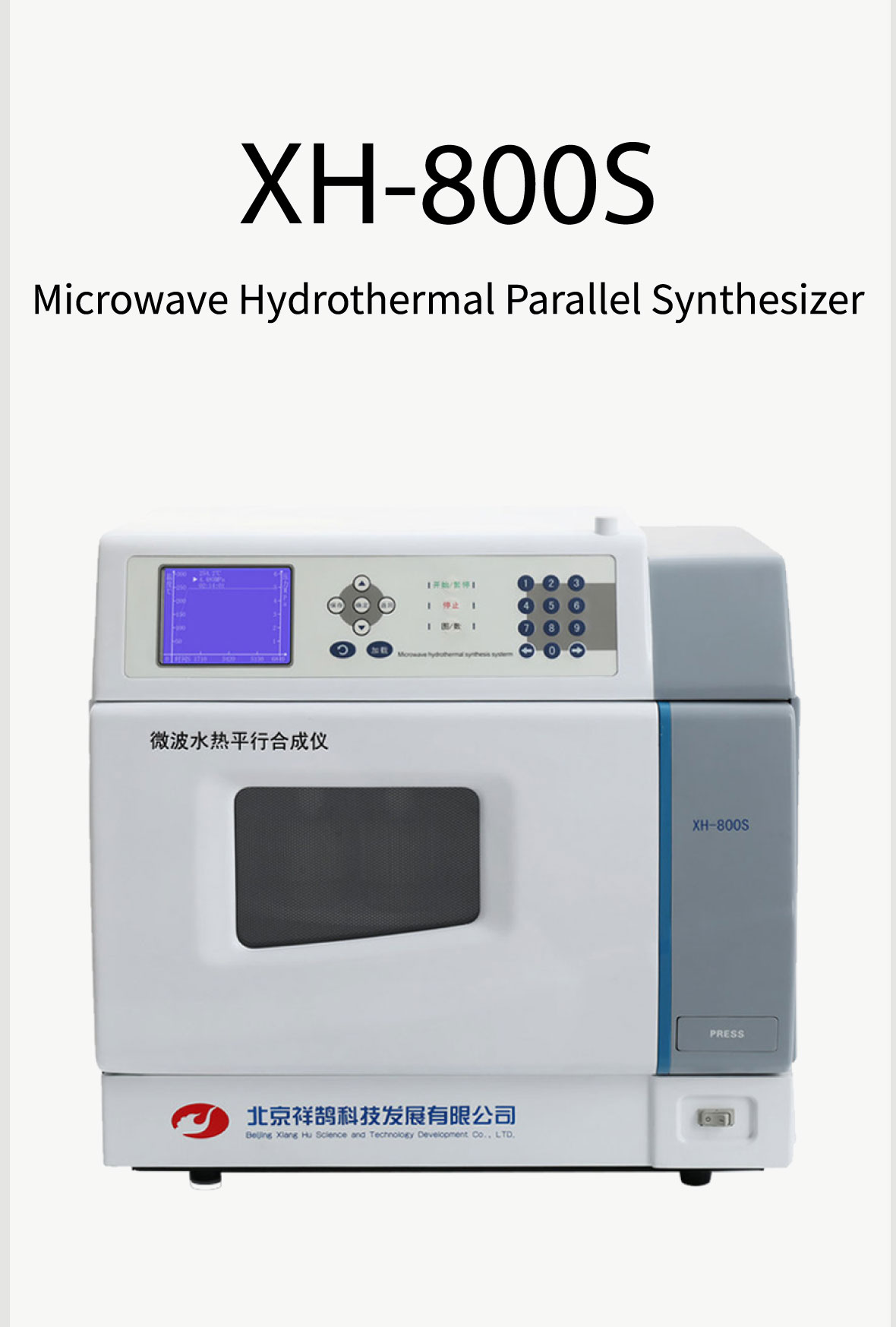
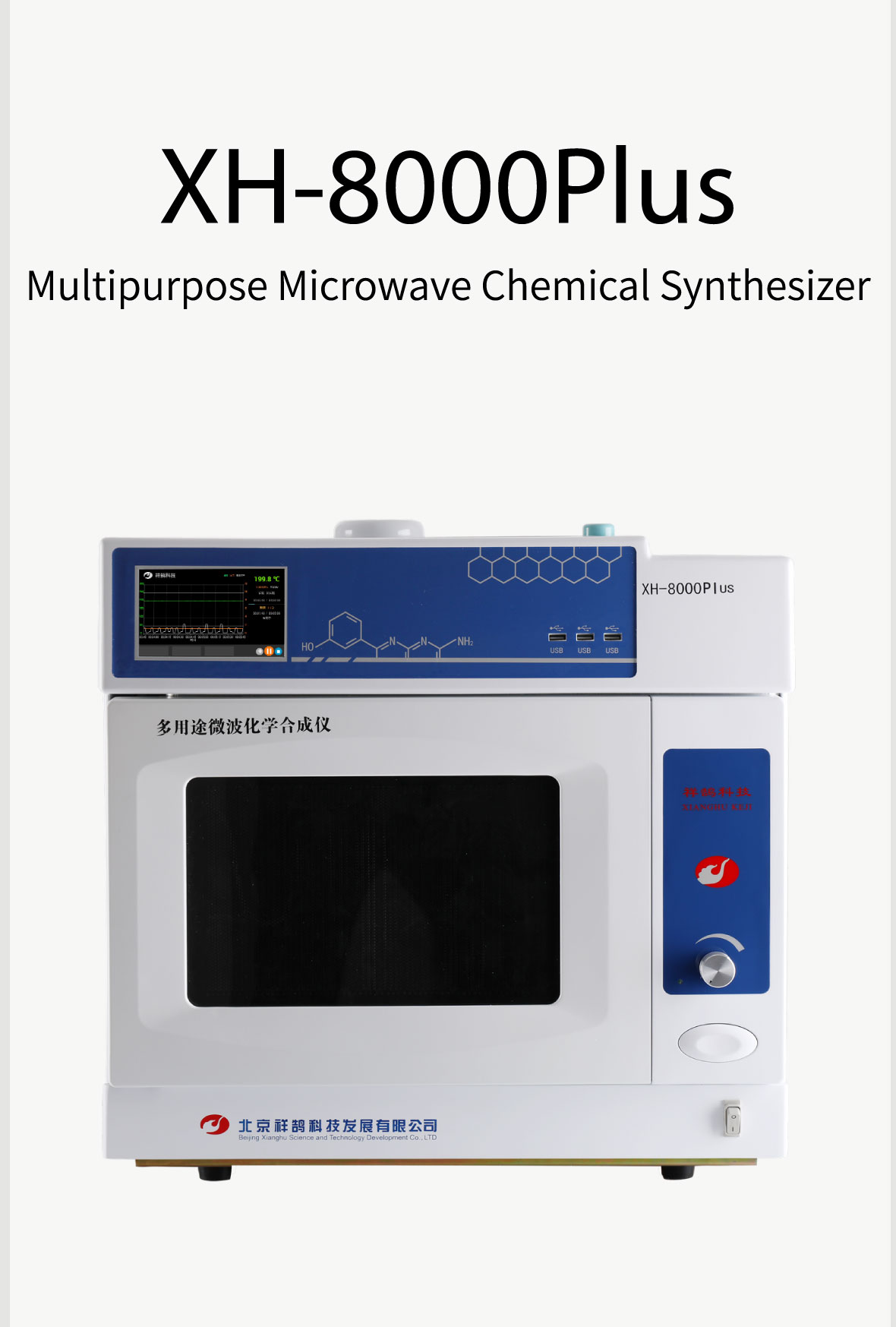
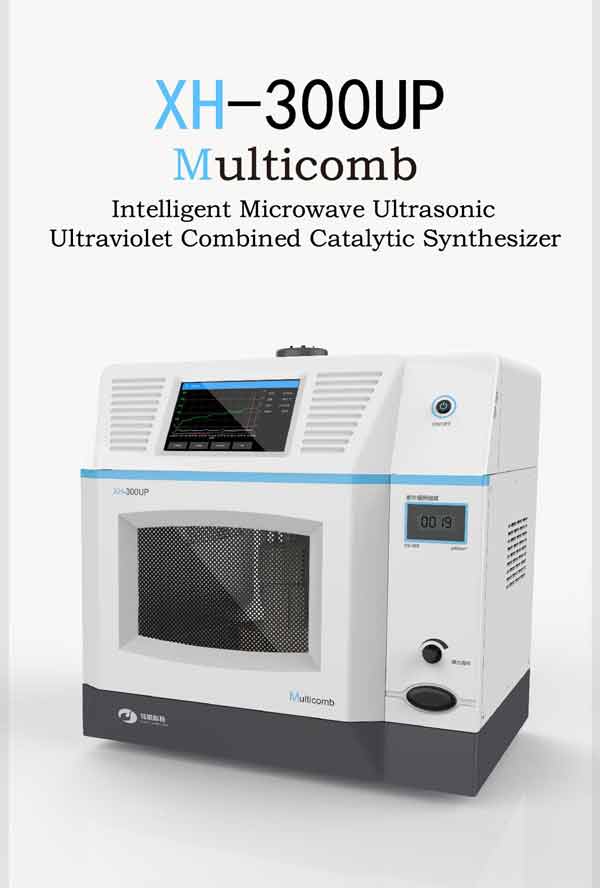
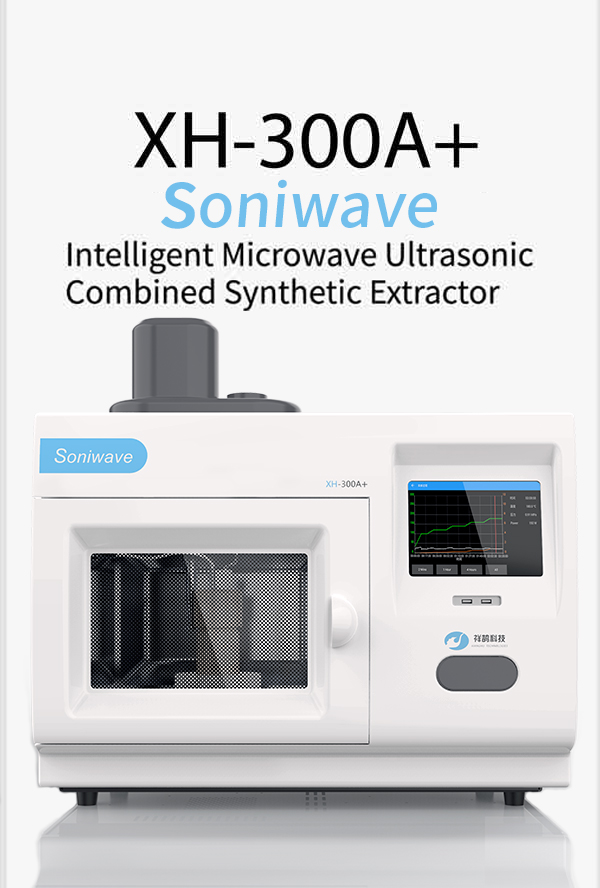

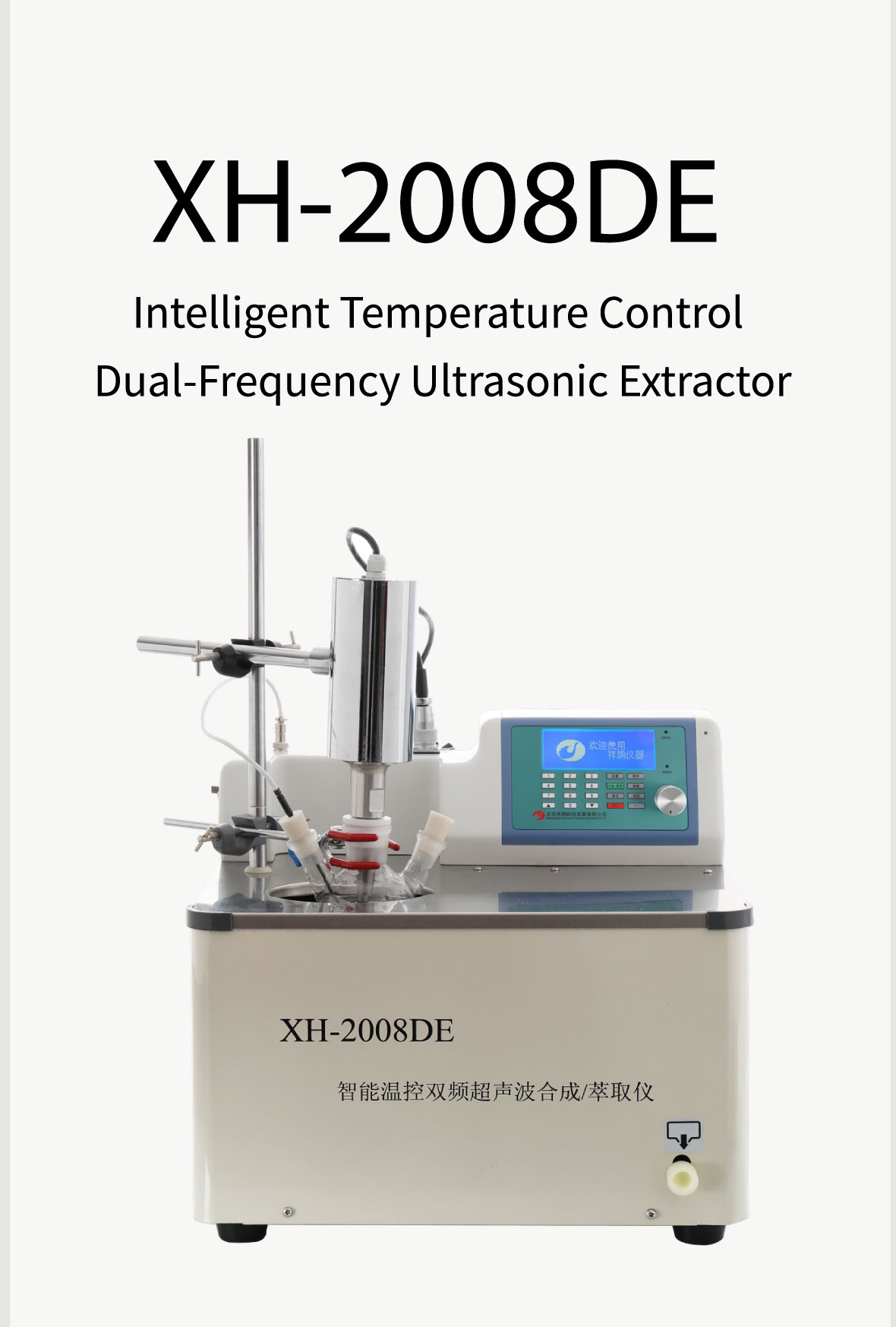



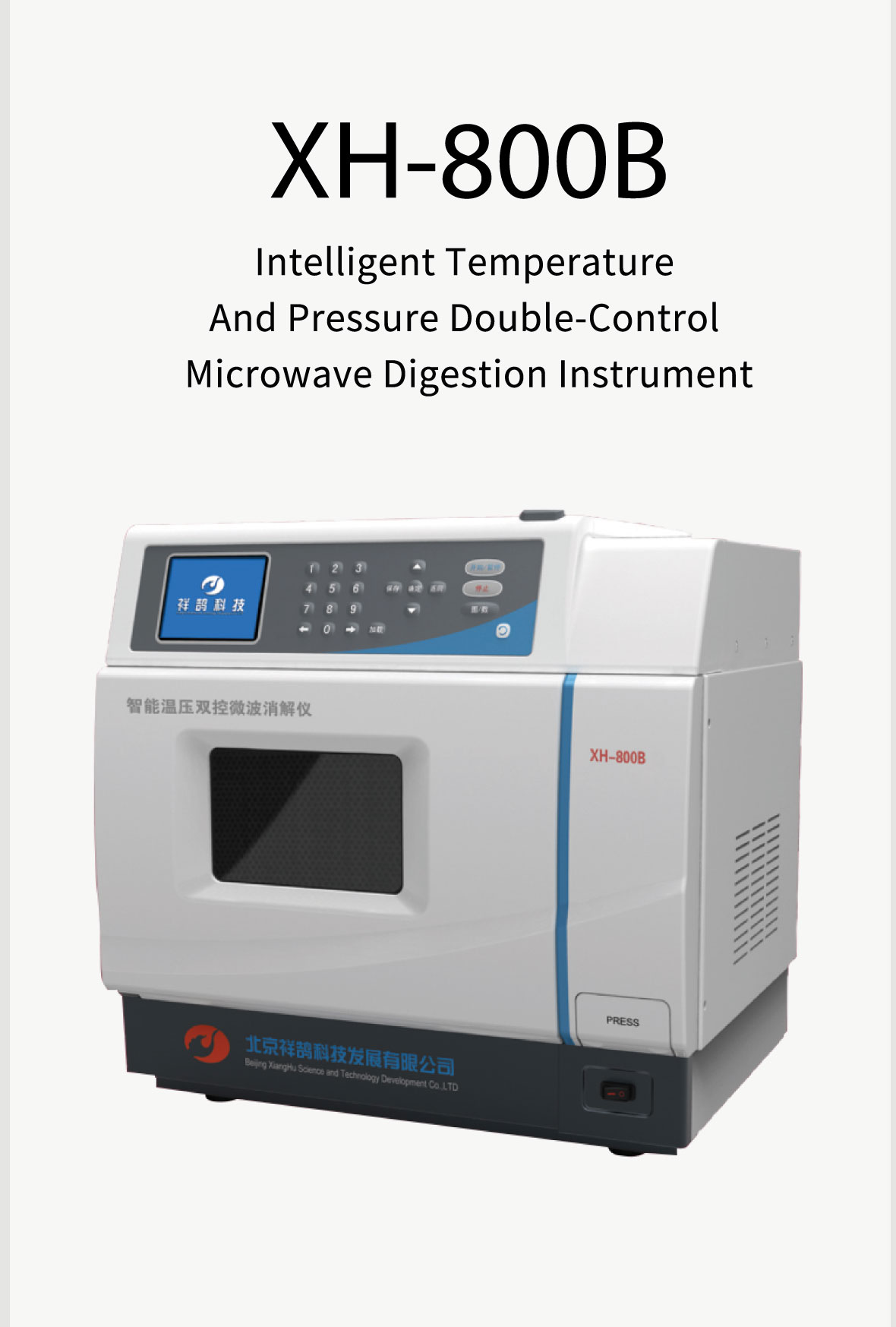

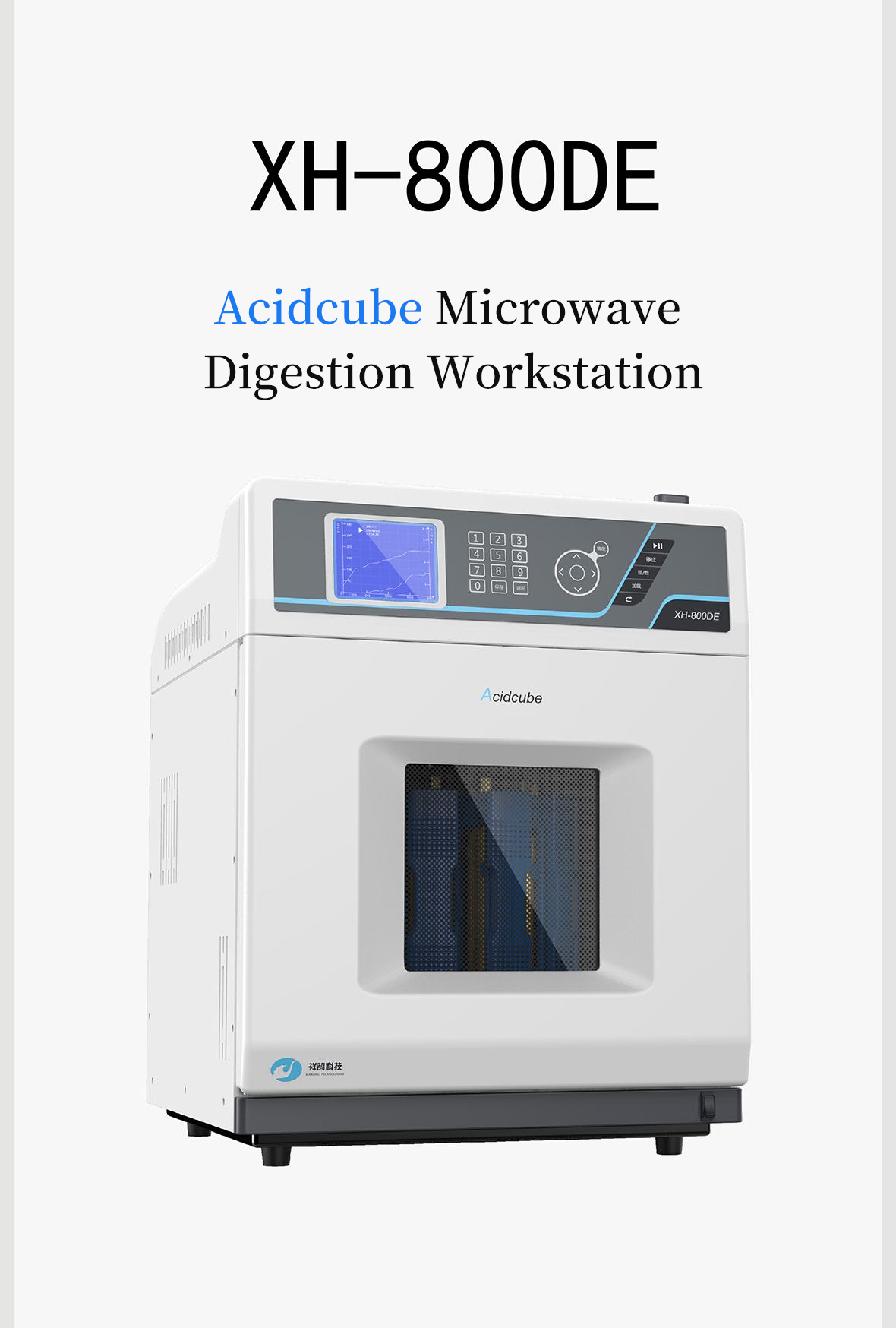

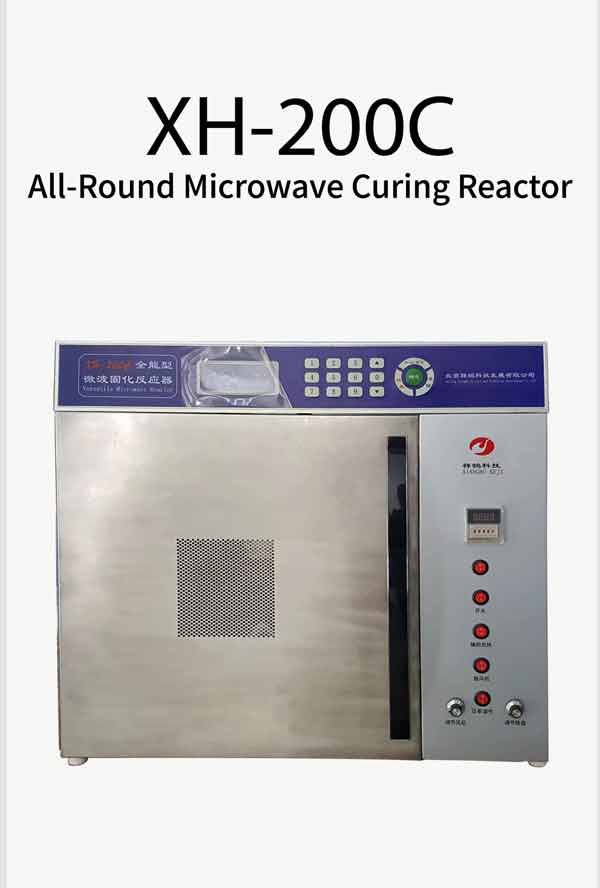
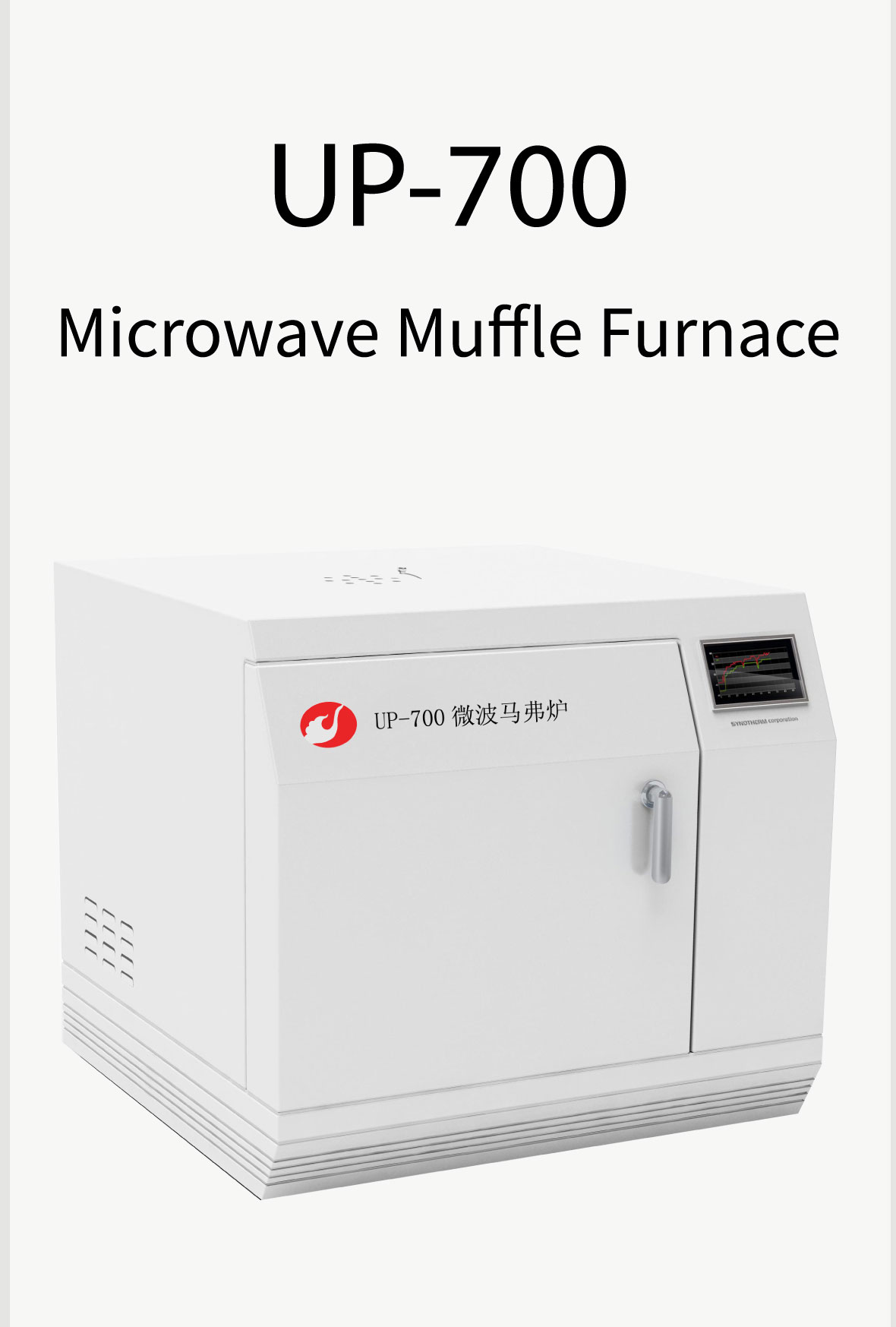

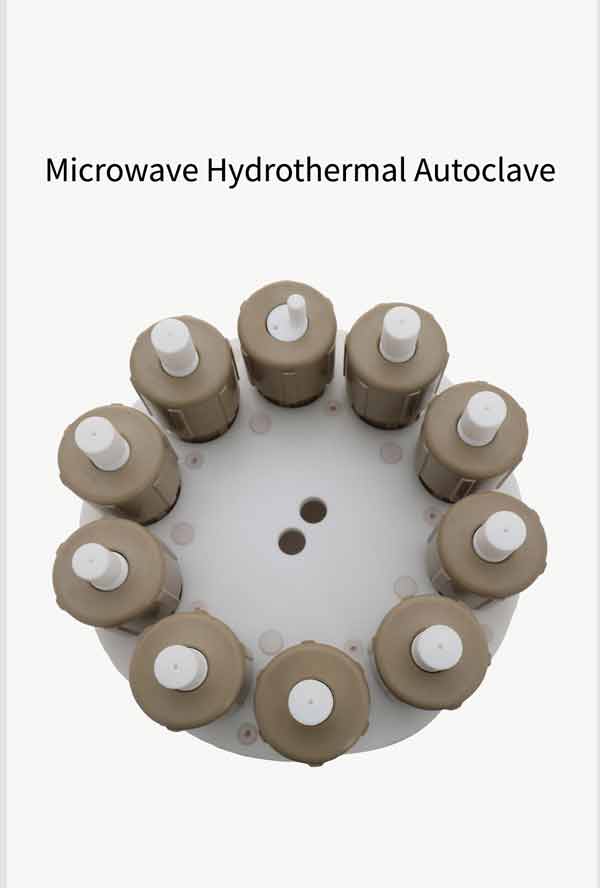

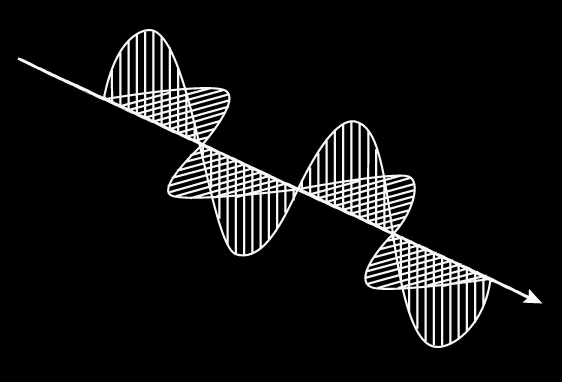

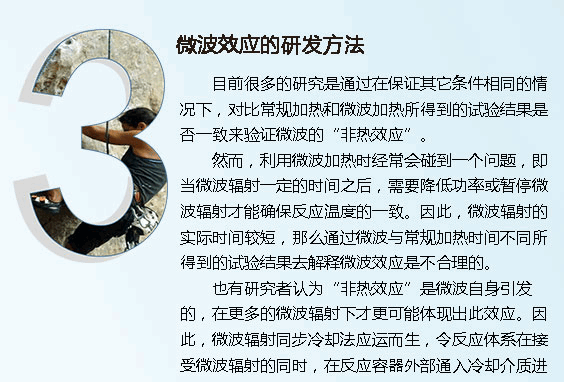
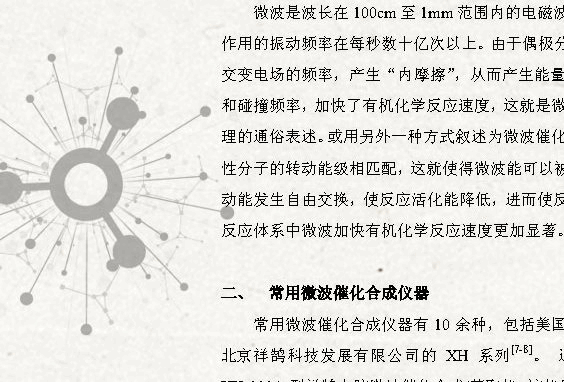

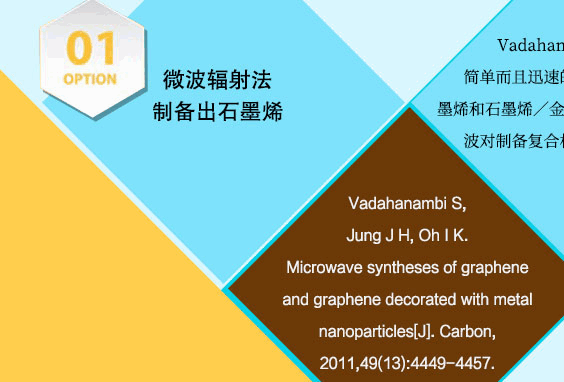
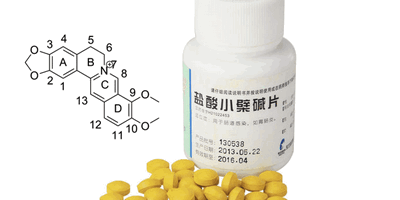


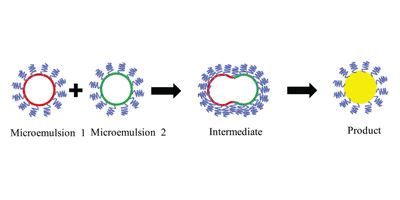
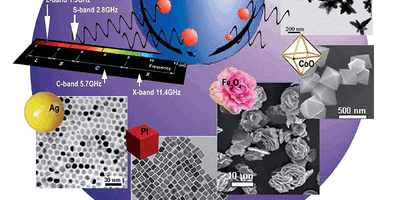
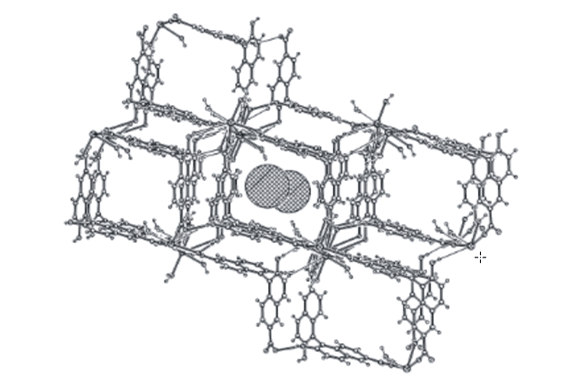
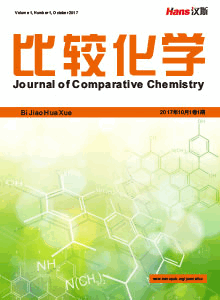
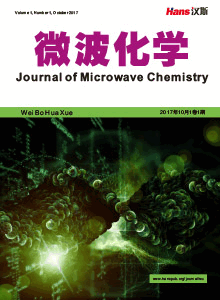





 京ICP备15050585号
京ICP备15050585号

